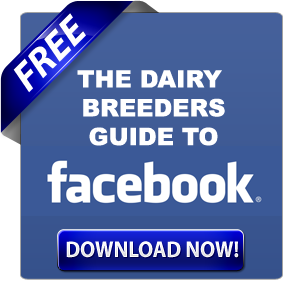Bird flu is transforming California’s dairy sector. Will farmers overcome these obstacles and find new opportunities?
Summary:
The avian influenza outbreak has severely impacted California’s dairy industry, resulting in a significant decline in milk production that has contributed to a nationwide decrease, setting it apart from growth seen in other major dairy states. Despite these challenges, global markets are seeing fluctuations, with China’s increased dairy imports providing relief. However, over 60% of California’s dairies remain affected, raising concerns about the agricultural industry’s resilience and necessitating robust, long-term biosecurity measures. While regions like Wisconsin, Texas, Idaho, and New York display diverse production trends, and Governor Gavin Newsom’s state of emergency declaration seeks to alleviate the crisis, the actual effectiveness of these strategies is yet to be determined.
Key Takeaways:
- California’s milk production has plunged significantly due to avian influenza, resulting in the state’s largest-ever decline in a century.
- The avian influenza virus currently affects approximately 60% of dairies in California, leading to a declared state of emergency by Governor Gavin Newsom.
- Despite California’s setbacks, other major dairy states like Texas and Idaho have seen an increase in milk production, cushioning the overall national decline.
- The global dairy market displays contrasting trends. European and New Zealand production thrives, while issues like bluetongue disease challenge European sectors.
- There’s a rebound in Chinese dairy imports, notably whole milk powder, presenting potential export opportunities for the U.S. dairy market.
- Commodity prices in the dairy sector have shown volatility, influenced by reduced milk output and international demand fluctuations.
- Class III and Class IV futures show divergent trends, with Class IV seeing gains while Class III faces downward pressure despite cheese market recovery.
- Feed markets experienced notable fluctuations, especially in the soy complex, driven by political developments, weather, and financial market dynamics.

According to USDA records, the bird flu has hit California hard, causing a historic 9.2% drop in milk production from last year—a decline never seen before in U.S. dairy history. With over 60% of the state’s dairies affected by this virus, California’s situation raises questions about the strength of the nationwide agricultural industry. The crisis in California’s dairy sector affects the state’s economy and has broader implications for the entire agricultural sector. It prompts essential conversations about the resilience of the industry and the strategies needed to handle such challenges.
The Unprecedented Bird Flu Crisis: California’s Struggle and its Impact on the Dairy Industry
Once known as the top dairy state in the United States, California faces a tough challenge: the flu. This problem has caused a significant drop in milk production, affecting the entire industry.
The numbers are shocking and show the profound impact. The United States Department of Agriculture (USDA) reports that California’s milk production dropped by 9.2% in November compared to last year. This is the most significant decrease in a hundred years of USDA records and is a significant blow to the state’s economy. It also affects the whole country, reducing U.S. milk production by 1% to 17.9 billion pounds.
The bird flu has made it harder for dairy farmers to maintain their usual production levels. The number of affected herds grew from 202 in October to 645 by December 17, affecting about 60% of California’s dairies. This large outbreak threatens the farms’ ability to survive and the jobs of their workers.
The consequences for dairy farmers are serious. With less production, they face financial pressures. The bird flu impacts immediate milk production and causes long-term challenges in managing herds and running farms. Governor Gavin Newsom’s emergency declaration is meant to help. However, there are still doubts about how effective current efforts are in stopping the outbreak.
California’s dairy farmers face tough choices as they continue to fight the bird flu. They must deal with uncertainties that test their strength and flexibility in an unpredictable industry.
Contrasting Fortunes: California’s Dairy Decline Amidst Robust National Growth
The dairy production trends in other parts of the United States starkly contrast with the bird flu crisis in California. While California grapples with a significant 9.2% drop in milk production due to avian influenza, other states have shown remarkable resilience and even growth. Despite a slight 0.3% decrease, Wisconsin managed better than California, underscoring a more stable dairy environment. Texas stood out with a remarkable 7.3% increase, proving its strength in dairy production. Similarly, Idaho and New York showed growth with increases of 2.1% and 1.2%, respectively, highlighting the diversity in production patterns across states and offering a glimmer of hope in the face of the crisis.
Internationally, the dairy production landscape presents a different story, with European outputs surpassing last year’s figures by 0.9%. Despite health challenges like Bluetongue disease affecting countries like Germany and the Netherlands, Europe has demonstrated strong adaptive skills and strategies to grow even in tough times. New Zealand also saw production rise, with a 2.1% increase in November compared to last year. This showcases the country’s effective management and hints at opportunities for export growth, especially with China’s rising demand for dairy products. These global trends highlight a dynamic dairy landscape, where resilience and the ability to adapt to health issues, like bird flu, are key to maintaining steady and growing production. All stakeholders must be aware of these global dynamics to make informed decisions in the face of the crisis.
Emergency Proclamation: A Solution or Mere Stopgap for California’s Dairy Dilemma?
Governor Gavin Newsom’s declaration of a state of emergency in California aims to mitigate the extensive damage the avian influenza outbreak has inflicted on the dairy industry. The declaration unlocks additional funding and facilitates enhanced coordination between state and local agencies, which could enable a more robust response to the crisis. However, the efficacy of these measures remains questionable, as the bird flu continues to spread at an alarming rate, affecting 60% of the state’s dairies.
Despite the emergency proclamation’s intended benefits, inherent challenges hinder its effectiveness. The unprecedented scale of the outbreak strains existing infrastructure and resources, rendering containment efforts largely inadequate. Furthermore, the virus’s transmission dynamics, which allow for rapid spread among densely populated dairy herds, exacerbate the difficulty of curbing its reach. While increased funding may boost containment strategies, the persistent challenges underscore the need for comprehensive, long-term biosecurity measures that extend beyond the immediate crisis.
In conclusion, while Governor Newsom’s emergency declaration is crucial in addressing the immediate impacts of the avian influenza outbreak, the enduring solution lies in the urgent implementation of comprehensive, long-term biosecurity measures. These measures, which should extend beyond the immediate crisis, are vital to ensuring the resilience of California’s dairy sector against similar threats in the long term. The crisis underscores the importance of proactive planning and preparing effectively for future risks.
Ripple Effect: Bird Flu’s Wide-Scale Impact on Dairy Commodity Prices and Futures
The bird flu crisis in California has shaken up the dairy markets, causing significant price changes and futures trading. The drop in milk production has reduced milk availability, sparking a ripple effect in dairy product prices.
Milk powder markets saw significant changes. With less milk available, people expected less milk powder production, which pushed CME nonfat dry milk (NDM) to $1.3925 per pound, a high not seen in two years. Butter prices also shot up by 8.25ȼ to $2.555 per pound, driven by the same supply issues.
The cheese market had its ups and downs. New production was expected to flood the market, but problems at new plants slowed down output, tightening supply. This led to CME spot Cheddar blocks rising by 5.5ȼ to $1.855 and barrels by 3.25ȼ to $1.76. This bounce back is different from the earlier worries about too much supply.
Dairy futures had mixed results even with price increases in the spot market. Class III futures fell because traders worried about too much supply in the future as new plants ran smoothly. A drop in whey prices, down by 5.25ȼ to 74ȼ, added to this concern. As a result, January Class III prices went down by 20ȼ to $19.79 per cwt. In contrast, Class IV futures rose, with first-quarter contracts rising by 40ȼ to $21.
Outside of dairy, the bird flu’s impact reached feed markets, which experienced many ups and downs influenced by political and financial changes. The soy market fell early in the week due to political issues. Still, it bounced back on Friday, probably because traders were closing bets. Although the markets are still shaky, this highlights the connection between agriculture and economic policies.
Chinese Market Surge: A Double-Edged Opportunity for U.S. Dairy Exports
With high demand for U.S. dairy products, China presents an excellent opportunity for American exporters. Chinese whey imports reached record levels in November, increasing by 3% compared to last year. The U.S. supplied a large portion, 44%, of this market. These numbers indicate growing export potential as China’s interest in dairy rises. This is shown by a significant 25% increase in whole milk powder (WMP) imports from the previous year.
Yet, these positive statistics carry risks that could change the outlook. A significant concern is the possibility of trade tensions between the U.S. and China. The global trade environment is complex and frequently changing due to political and policy shifts. These factors could disrupt the movement of delicate dairy products, which must meet strict regulations from importing countries.
The balance between these opportunities and challenges will shape the future of the U.S. dairy industry. If trade relations stay stable, the industry might grow through increased exports, boosting farmers’ profits and security. However, trade disputes could cause market instability and price changes, possibly pushing U.S. dairy aside for other international suppliers ready to meet China’s needs. Navigating these uncertain times with careful diplomacy and strict quality control is key to helping the U.S. dairy sector succeed in a complex global market.
The Bottom Line
As we wrap up the events in this report, it’s clear that California’s dairy industry is facing one of its most challenging times due to the spread of bird flu. The state’s milk production has dropped by 9.2%, highlighting regional weaknesses and affecting dairy markets worldwide. Meanwhile, Wisconsin and other big dairy states have managed to keep their production steady or even increase it, showing a big difference in how regions handle things.
The bird flu crisis has had mixed results in commodity markets, with price increases in butter and nonfat dry milk and unstable conditions in the cheese market. With Governor Newsom’s state of emergency, we must ask if these actions are enough. Will these efforts lead to permanent solutions, or are they just temporary fixes? Additionally, the risks arising from more Chinese dairy imports require careful planning from U.S. dairy exporters.
As we ponder the dairy industry’s future, key questions arise: Are we ready to handle and adjust to unexpected challenges in health and the economy? What should be the role of government and industry leaders in strengthening the industry and ensuring it recovers sustainably? Many challenges exist, but they also provide opportunities for intense strategic changes. Now is the time for industry players to plan a proactive way forward.
Learn more:
- US Dairy Farmers’ Guide: Navigating Bird Flu Outbreak – Permits, Quarantines and Beyond
- Navigating the Bird Flu Outbreak: The CDC, State Governments, and Agricultural Sector’s Complex Power Struggle
- US Dairy Farms Battle Bird Flu: 24 Companies Racing to Develop Vaccine
 Join the Revolution!
Join the Revolution!
Bullvine Daily is your essential e-zine for staying ahead in the dairy industry. With over 30,000 subscribers, we bring you the week’s top news, helping you manage tasks efficiently. Stay informed about milk production, tech adoption, and more, so you can concentrate on your dairy operations.







 Join the Revolution!
Join the Revolution!




